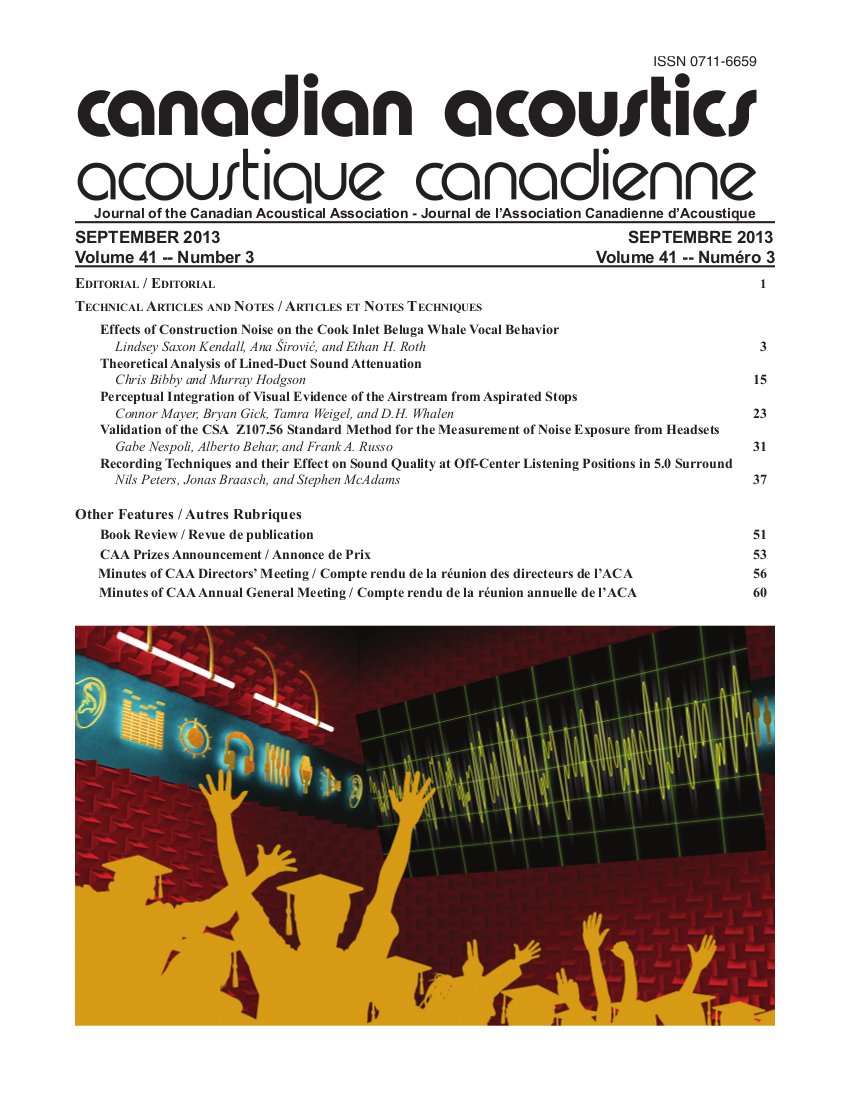Editorial
Abstract
The September issue of Canadian Acoustics is normally theproceedings issue of Acoustics Week in Canada. However,
given the joint meeting earlier this year of the Canadian
Acoustical Association and the Acoustical Society of Amer-
ica (ASA) under the aegis of the International Commission
for Acoustics, proceedings have been published in the ASA’s
Proceedings of Meetings on Acoustics (Volume 19). In its
place, I am pleased to present a special issue dedicated to
research by new Scholars. All lead authors published herein
are within 10 years of the terminal degree. We are fortunate
to be witnessing a period of continued growth in all areas
of acoustics. This growth is fueled by new scholars who are
working to advance established subfields as well as to create
new ones.
The current issue captures a representative sample of this
growth spanning bio-acoustics, psychological acoustics, un-
derwater acoustics, noise control, and speech sciences.
The focus on new scholars is timely given the renewal that
the journal has undergone recently. In December of 2012, the
editorial board was renewed and past issues of the journal be-
came available online at jcaa.caa-aca.ca. Since that time there
has been an increase in the rate of submissions to the journal.
To stay ahead of these increases, we have phased in an elec-
tronic manuscript submission system and reduced the time it
takes to reach an editorial decision (8 weeks currently). Ac-
cess to the journal is also open with the exception of issues
published within the most recent calendar year. These chang-
es are helping to increase the visibility of the journal and to
disseminate its contents more widely. Looking forward, the
renewal at the journal will continue with Jérémie Voix taking
over my role as Editor effective March of 2014.
Additional Files
Published
How to Cite
Issue
Section
License
Author Licensing Addendum
This Licensing Addendum ("Addendum") is entered into between the undersigned Author(s) and Canadian Acoustics journal published by the Canadian Acoustical Association (hereinafter referred to as the "Publisher"). The Author(s) and the Publisher agree as follows:
-
Retained Rights: The Author(s) retain(s) the following rights:
- The right to reproduce, distribute, and publicly display the Work on the Author's personal website or the website of the Author's institution.
- The right to use the Work in the Author's teaching activities and presentations.
- The right to include the Work in a compilation for the Author's personal use, not for sale.
-
Grant of License: The Author(s) grant(s) to the Publisher a worldwide exclusive license to publish, reproduce, distribute, and display the Work in Canadian Acoustics and any other formats and media deemed appropriate by the Publisher.
-
Attribution: The Publisher agrees to include proper attribution to the Author(s) in all publications and reproductions of the Work.
-
No Conflict: This Addendum is intended to be in harmony with, and not in conflict with, the terms and conditions of the original agreement entered into between the Author(s) and the Publisher.
-
Copyright Clause: Copyright on articles is held by the Author(s). The corresponding Author has the right to grant on behalf of all Authors and does grant on behalf of all Authors, a worldwide exclusive license to the Publisher and its licensees in perpetuity, in all forms, formats, and media (whether known now or created in the future), including but not limited to the rights to publish, reproduce, distribute, display, store, translate, create adaptations, reprints, include within collections, and create summaries, extracts, and/or abstracts of the Contribution.


